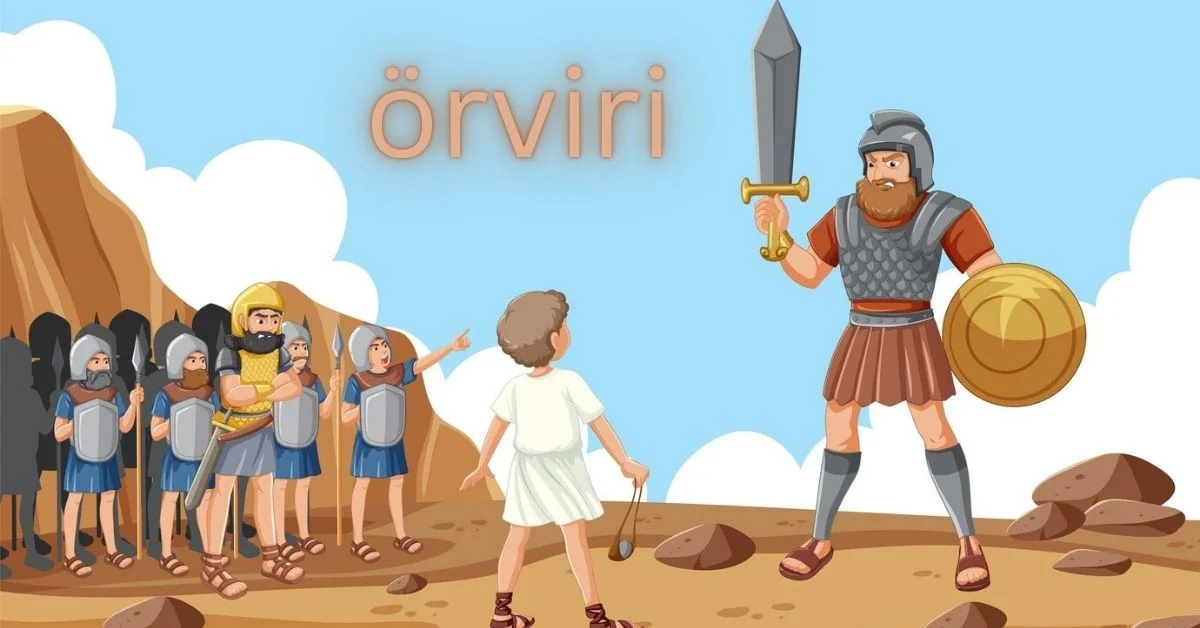Örviri is a term that carries an intriguing mix of history, symbolism, and practical application. In this article, we’ll embark on a journey through time to uncover the origins of Örviri, explore its cultural and linguistic significance, and delve into the many ways it finds relevance in our modern world. Whether you’re a curious history buff or someone looking to understand this multifaceted concept, we’ve got you covered with insights and thoughtful analysis.
Introduction
What is Örviri?
Örviri is not just another word you come across in everyday language. It represents a concept steeped in history, rich in meaning, and laden with cultural connotations. Though its exact definition might seem elusive at first, Örviri has become synonymous with transformation, symbolism, and creative expression. When you hear the term, think of it as a doorway into a realm where tradition meets modernity.
Why Örviri Matters Today
In today’s fast-paced world, many traditional symbols and ideas are being reinterpreted to align with modern sensibilities. Örviri is one such concept that has not only survived the passage of time but has also evolved to play a significant role in contemporary society. It serves as a bridge connecting our past with our present and future, offering a unique perspective on cultural continuity and change.
The Historical Roots of Örviri
Origins and Ancient Beginnings
The roots of Örviri stretch back centuries. Many historians believe that the term originated in ancient civilizations, where it was used to denote concepts of renewal and transformation. Early texts and folklore hint at a deep connection between Örviri and the cycles of nature, mirroring the seasonal changes and the eternal process of life, death, and rebirth.
This ancient symbolism often linked Örviri to rituals and ceremonies that marked important communal events. From harvest festivals to spiritual rites, the term was imbued with the power to signify both the culmination of one phase and the promise of a new beginning.
Evolution Through Time
As time marched on, the meaning of Örviri evolved. In medieval times, it was often associated with mystical practices and secret societies. Scholars of that era documented how Örviri was used in allegorical stories and symbolic art, serving as a metaphor for the human journey. The term became a vehicle for expressing complex ideas about identity, morality, and the nature of existence.
Moving into the modern era, Örviri took on new dimensions. The resurgence of interest in ancient traditions meant that many people began to reinterpret Örviri through the lens of contemporary thought, merging age-old symbolism with modern creativity and innovation.
Cultural and Symbolic Significance
Traditional Interpretations
In various cultures, Örviri has been more than just a word—it’s a symbol. In traditional communities, it often represents the harmony between man and nature. For instance, in certain ancient rituals, Örviri was a symbol of balance, where opposing forces such as light and dark, life and death, were seen as interconnected parts of a greater whole.
Artists and storytellers from these cultures used Örviri to illustrate the importance of maintaining equilibrium in both the natural world and human society. Its depiction in ancient artifacts and traditional art forms serves as a reminder of the values held dear by past generations.
Modern Cultural Impact
Today, Örviri has been embraced by various movements that seek to rediscover and celebrate traditional wisdom in a modern context. Whether it’s through art, literature, or even technology, the spirit of Örviri is alive and well. Modern interpretations often emphasize personal growth, transformation, and the breaking down of barriers that inhibit progress.
From community festivals to digital art installations, the concept of Örviri resonates with those who are seeking a connection to their cultural heritage while also navigating the complexities of contemporary life. It inspires us to look beyond the surface and find meaning in our everyday experiences.
Understanding the Meaning and Etymology
Linguistic Origins
The etymology of Örviri is as layered as its historical journey. Linguists suggest that the term may have roots in ancient languages, where it was associated with words meaning “renewal” or “awakening.” Over centuries, the pronunciation and connotations of Örviri shifted as it passed through different cultures and dialects, each adding its own nuance to the term.
Understanding these linguistic shifts helps us appreciate how Örviri has become a melting pot of ideas and influences. It serves as a reminder that language is fluid, adapting over time to reflect the evolving realities of human society.
Interpretations and Connotations
Beyond its literal meaning, Örviri is rich with metaphorical significance. For many, it symbolizes the human capacity for reinvention. Just as nature goes through cycles of decay and regeneration, Örviri represents our potential to shed old habits and embrace new beginnings. It speaks to the resilience of the human spirit and the perpetual possibility for change and growth.
When we talk about Örviri, we are often referring to a state of continual evolution—whether in personal development, cultural traditions, or technological innovation.
Uses and Applications of Örviri
In Art and Literature
Örviri has long been a muse for artists and writers. Its inherent symbolism offers a fertile ground for creative exploration.
Influences on Creative Expression
Artists are drawn to Örviri because it encapsulates the essence of transformation. Whether it’s in a painting that transitions from darkness to light or a novel that charts the course of a character’s personal journey, Örviri offers a profound metaphor for change. The concept challenges creators to think beyond conventional boundaries and explore the depths of human experience.
Notable Works Featuring Örviri
Numerous works of art and literature have incorporated Örviri as a central theme. Some classic novels reference its symbolic meaning to illustrate the metamorphosis of their characters. In visual arts, sculptures and murals depicting cyclical patterns often evoke the spirit of Örviri, reminding us of the endless possibilities inherent in transformation.
In Modern Practices
Örviri is not confined to the realm of art and literature. Its principles have found a place in various modern practices, influencing how we perceive change and progress in everyday life.
Everyday Applications
In contemporary society, the idea of transformation—at the heart of Örviri—is often applied in self-help and motivational contexts. People use the concept to inspire personal growth, viewing each day as an opportunity to reinvent themselves. This mindset encourages a proactive approach to life, where setbacks are seen as temporary and growth is an ongoing journey.
Technological Integration
Interestingly, the ethos of Örviri has even permeated technological innovation. As industries evolve, there is a growing emphasis on iterative development, continuous improvement, and agile methodologies. This modern application mirrors the cyclical nature of Örviri, where each new version or update builds upon the lessons of the past, paving the way for future advancements.
Örviri in Contemporary Society
The Role in Social Movements
In recent years, Örviri has emerged as a rallying symbol for various social movements. Its core message of transformation resonates with activists who advocate for systemic change. Whether it’s environmental sustainability, social justice, or community empowerment, the underlying theme of renewal and rebirth serves as a powerful metaphor for progress.
Activists use Örviri to remind people that change, though often challenging, is a natural part of any evolving society. This symbolism provides both hope and a call to action, inspiring individuals to work collectively for a better future.
Integration in Digital Media
Digital media platforms have played a significant role in propagating the modern interpretation of Örviri. Memes, digital art, and social media campaigns frequently incorporate its themes to highlight the importance of adaptability and innovation. In an age where information is constantly evolving, Örviri offers a comforting reminder that transformation is not only inevitable but also necessary for growth.
Social media influencers and digital artists have embraced this concept, using it to craft narratives that bridge the gap between traditional wisdom and modern technology. The result is a dynamic blend of old and new—a true testament to the enduring nature of Örviri.
The Future of Örviri
Emerging Trends
Looking ahead, the influence of Örviri is poised to grow even stronger. Emerging trends in art, technology, and social activism all reflect a shared fascination with the concept of continuous renewal. As we become more aware of the need to adapt and innovate, Örviri’s symbolism is likely to inspire new methodologies and creative practices.
Emerging artists are already experimenting with interactive digital installations that allow audiences to experience transformation in real time. Similarly, industries are adopting more flexible and adaptive strategies that echo the iterative nature of Örviri.
Predictions and Opportunities
The future of Örviri is bright. As global cultures become increasingly interconnected, the exchange of ideas will continue to refine and expand its meaning. Innovations in technology, especially in fields like artificial intelligence and virtual reality, may soon offer new ways to experience and interact with this ancient concept.
Opportunities abound for those who embrace the spirit of Örviri. By fostering a mindset that values transformation and resilience, individuals and communities can better navigate the uncertainties of a rapidly changing world.
Challenges, Controversies, and Criticisms
Debates Among Scholars
Not everyone sees Örviri through rose-tinted glasses. There are ongoing debates among historians, linguists, and cultural critics about its origins and interpretations. Some argue that modern reinterpretations dilute the true historical meaning of Örviri’s, while others claim that such evolution is necessary to keep ancient traditions relevant in contemporary times.
These debates highlight the complex interplay between tradition and innovation. While some purists advocate for a strict adherence to historical definitions, progressive thinkers believe that transformation is the only way to honor the essence of Örviri.
Common Misconceptions
Another challenge lies in the misconceptions that surround Örviri. With its multifaceted history, it’s easy for the term to be oversimplified or misunderstood. Misinterpretations can lead to its misapplication in contexts where its deeper meanings are lost.
Educating the public about the true historical and cultural roots of Örviri’s is essential. By fostering informed discussions, we can ensure that its legacy continues to inspire meaningful change rather than become a mere buzzword devoid of context.
Conclusion and Final Thoughts
In wrapping up our exploration of Örviri, it’s clear that this concept is much more than a historical curiosity—it’s a vibrant, living idea that continues to influence art, culture, technology, and social progress. From its ancient origins to its modern-day reinterpretations, Örviri’s embodies the timeless cycle of transformation and renewal.
Whether you view it as a symbol of personal growth or as a metaphor for societal change, Örviri’s offers a powerful reminder of our potential to evolve and adapt. By embracing the lessons of the past and looking forward with hope, we can harness the spirit of Örviri to create a brighter, more resilient future.
FAQs
What exactly does Örviri mean?
Örviri is a multifaceted concept that primarily represents transformation, renewal, and the cyclical nature of existence. It encapsulates both historical symbolism and modern interpretations, emphasizing the continuous process of growth and change.
Where does the term Örviri’s originate from?
The origins of Örviri’s are believed to trace back to ancient civilizations, where it was used in rituals and art to symbolize the natural cycles of life, death, and rebirth. Over time, its meaning evolved as it was adopted by various cultures.
How is Örviri’s used in modern art and literature?
Artists and writers often use Örviri’s as a metaphor for transformation and renewal. In art, it might be depicted through imagery that transitions from darkness to light, while in literature, it can represent a character’s personal growth or change.
Can Örviri’s be applied to modern technology?
Yes, the ethos of Örviri’s is evident in the iterative process seen in technological advancements. Concepts like continuous improvement and agile methodologies echo the idea of transformation inherent in Örviri’s.
What challenges does the concept of Örviri’s face today?
One of the main challenges is the potential for oversimplification or misinterpretation. Scholars debate its historical accuracy versus modern reinterpretation, and there is an ongoing need to educate the public on its true cultural and symbolic significance.

